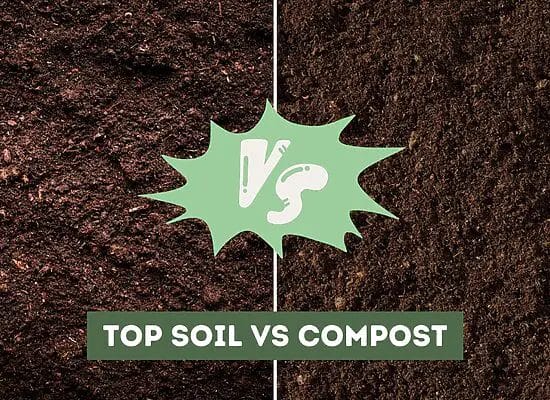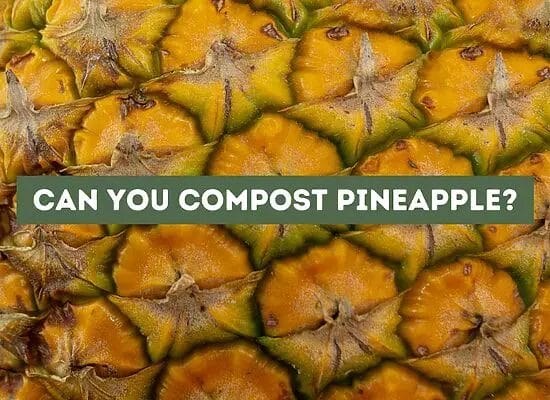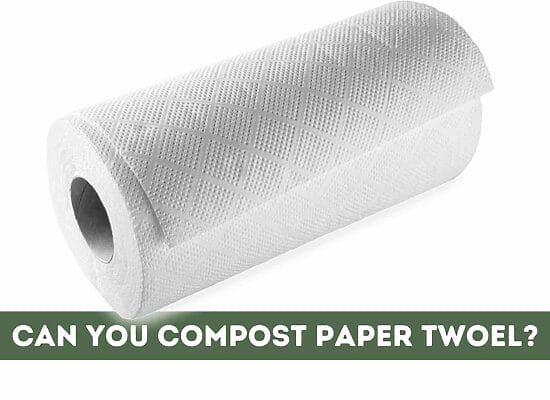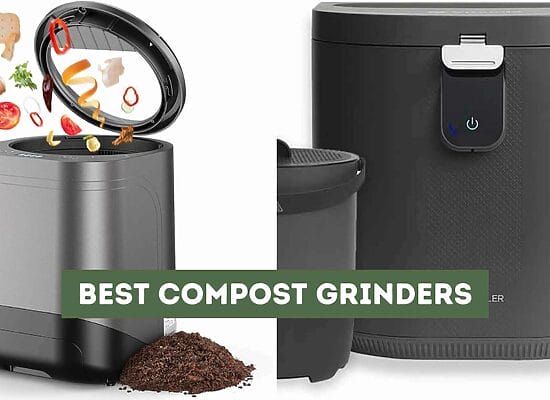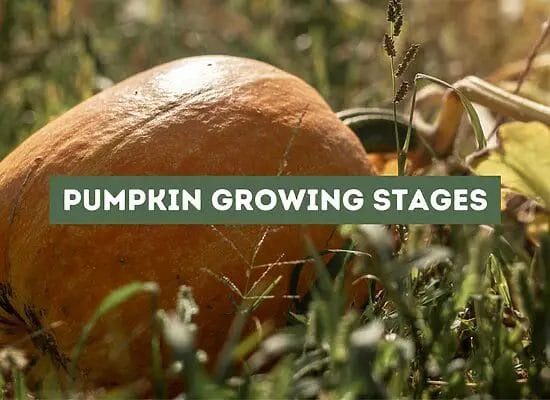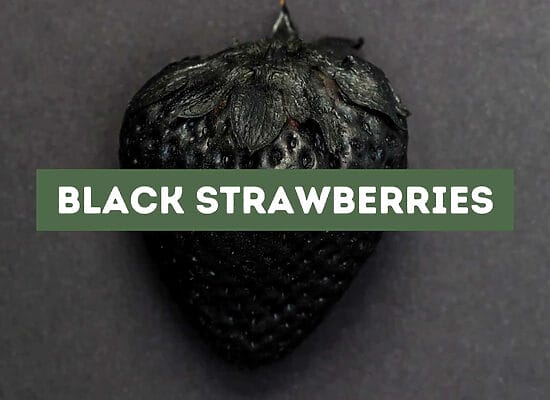
Harvesting spinach is a delicate task that requires a bit of know-how to avoid damaging the plant. If done correctly, you can enjoy a bountiful harvest of fresh, nutritious spinach all season long. Below we’ll guide you on how to harvest spinach without killing the plant.
To start, it’s important to understand the anatomy of a spinach plant. Spinach leaves grow from a central stem, with new leaves emerging from the center as the plant matures. When harvesting, you want to avoid damaging the central stem or the leaf nodes, which are the points where new leaves grow. Doing so can stunt the plant’s growth and reduce its overall yield.
Fortunately, there are several methods for harvesting spinach that will keep your plants healthy and productive.
Key takeaways:
- Understanding Spinach Growth:
- Spinach is a leafy green vegetable that thrives in cool temperatures.
- It grows from a central stem, with new leaves emerging from the center.
- Harvesting should avoid damaging the central stem and leaf nodes to prevent growth issues.
- Proper Timing and Conditions:
- Spinach grows best between 35-75°F (1.5-24°C) and in well-draining, organic-rich soil.
- Adequate moisture is important, but overwatering can lead to root rot.
- Wait until the plant is at least 6 inches tall with 2-3 inch long leaves before harvesting.
- Iron Content Myth:
- Spinach is known for its iron content, although not as high as previously believed.
- Spinach remains a nutritious vegetable rich in vitamins and minerals.
- Harvesting Methods:
- Harvest spinach using sharp scissors or shears, leaving ½ inch of stem.
- Clear-cutting by the bunch is an option for mature leaves.
- Harvest leaves when they’re 4-6 inches long to balance yield and flavor.
- Continuous Harvesting:
- Regular harvesting every 2-3 weeks encourages new growth and steady yield.
- Harvest outer leaves first to promote inner leaf growth.
- Post-Harvest Care:
- Watering after harvesting is crucial, but avoid overwatering or underwatering.
- Regrowth occurs quickly, and stress factors like extreme weather should be minimized.
- Harvesting only a third of the leaves helps regrowth and energy production.
- Storage and Usage:
- Store harvested spinach dry in the refrigerator, or freeze it for longer storage.
- Use harvested spinach quickly due to its tendency to wilt.
- Spinach can be used raw in salads or cooked in various dishes while maintaining its nutritional benefits.
Understanding Spinach
Spinach is a leafy green vegetable that is easy to grow in a garden bed. It is a cool-season crop that thrives in the spring and fall. Spinach grows quickly and can reach maturity in as little as 30 days. Once the plant reaches maturity, it will begin to produce flowers and then bolt. Bolting is when the plant starts to produce a tall stem and stops producing foliage.
To harvest spinach without killing the plant, it’s important to understand its growth cycle. Spinach grows best in cool temperatures between 35-75°F (1.5-24°C). It prefers well-draining soil that is rich in organic matter. Spinach needs consistent moisture, but be careful not to overwater it. Overwatering can lead to root rot and other diseases.
When harvesting spinach, it’s important to wait until the plant is at least 6 inches (15 cm) tall and its leaves are 2-3 inches (5-7.5 cm) long. Harvesting too early can stunt the growth of the plant while harvesting too late can cause the leaves to become bitter.
One fun fact about spinach is that it is high in iron. However, contrary to popular belief, spinach is not the best source of iron. The myth that spinach is a significant source of iron can be traced back to a misplaced decimal point in a study from the 19th century. Nonetheless, spinach is still a nutritious vegetable that is rich in vitamins and minerals.
Preparing for Harvest
To ensure a successful harvest, it is important to prepare your spinach plants properly. Here are some tips to help you get started:
Timing
Spinach is a cool-season crop that thrives in early spring and fall. It is important to plant spinach early in the growing season to ensure that it has enough time to mature before the weather gets too hot. Keep in mind that spinach plants typically mature in 40-50 days.
Watering
Spinach plants require consistent watering throughout the growing season. It is important to keep the soil moist but not waterlogged. Overwatering can lead to root rot, which can kill your plants. Aim to water your spinach plants at least once a week and more often during hot, dry weather.
Fertilizing
Spinach plants are heavy feeders and require regular fertilization to thrive. You can fertilize your plants with a balanced fertilizer every 4-6 weeks throughout the growing season. Be sure to follow the instructions on the fertilizer package carefully, as over-fertilizing can damage your plants.
Temperature
Spinach plants prefer cool temperatures and will bolt (go to seed) quickly in hot weather. To keep your plants healthy, it is important to keep them in a cool, shaded area during the hottest part of the day. You can also use a shade cloth to protect your plants from the sun.
Harvesting
When it comes time to harvest your spinach, there are a few things to keep in mind. First, be sure to harvest your plants when they are mature but before they bolt. You can tell if your plants are ready to harvest by looking at the size of the leaves. Mature spinach leaves are typically 4-6 inches long.
To harvest your spinach, use a sharp pair of scissors or garden shears to cut the leaves from the plant. Be sure to leave at least 1/2 inch of stem on the plant, as this will encourage new growth. You can also pinch the leaves off the plant if the stem is tender.
Identifying the Right Time to Harvest
Harvesting spinach at the right time is crucial to ensure a continuous yield of fresh and nutritious leaves. Spinach is a cool-season crop that grows best in early spring and late summer when the soil temperature ranges between 45 and 68 degrees Fahrenheit.
The first harvest of spinach can be done when the plant has grown to about three to four leaves, which usually takes around 37 to 45 days. At this stage, the spinach looks more like a rosette, and the leaves are still tender and sweet.
When harvesting mature leaves, make sure to only pick about one-third of each plant to avoid killing it. This way, the remaining leaves can continue to grow and produce more spinach.
If you prefer baby spinach, you can harvest it as early as 25 days after planting. Baby spinach is harvested when the leaves are small and tender and the plant has not yet developed a rosette.
To ensure continuous harvests, pick the outer leaves of the spinach plant first, leaving the inner leaves to continue growing. This way, the plant can produce more leaves, and you can enjoy fresh spinach throughout the growing season.
Methods of Harvesting Spinach
When it comes to harvesting spinach, there are a few methods you can use to ensure that you don’t kill the plant in the process. Here are some tips and tricks to help you harvest spinach without harming the plant:
1. Leaf Harvesting
One of the most common methods of harvesting spinach is by picking the leaves individually. To do this, you will need a pair of sharp scissors or a serrated knife. Simply cut the leaves off the plant, leaving about ½ inch of stem intact. This will help to keep the leaf node intact and encourage thicker growth. If the stem is tender, you can also pinch the leaf from the plant.
2. Clear-Cutting
Another method of harvesting spinach is called clear-cutting by the bunch. This involves cutting the entire plant at once, leaving only a few inches of stem behind. This method is best used when the spinach leaves are large and mature, and you want to harvest a large amount at once.
3. Size Matters
When harvesting spinach, it’s important to pay attention to the size of the leaves. If you wait too long to harvest, the leaves will become tough and bitter. On the other hand, if you harvest the leaves too early, you won’t get as much yield. The best time to harvest spinach is when the leaves are about 4-6 inches long.
4. Yield
To get the most yield from your spinach plants, it’s important to harvest regularly. This will encourage new growth and ensure that you have a continuous supply of fresh spinach throughout the growing season. Aim to harvest your spinach every 2-3 weeks.
5. Tips and Trick
Here are a few additional tips and tricks to help you harvest spinach without killing the plant:
- If you’re using a knife to harvest your spinach, make sure it’s sharp. A dull knife can damage the plant and make it more susceptible to disease.
- When harvesting, try to avoid touching the leaves as much as possible. This can cause bruising and damage to the plant.
- If you’re harvesting a large amount of spinach at once, be sure to store it in a cool, dry place to prevent wilting and spoilage.
Harvesting Without Killing the Plant
Harvesting spinach is a crucial step in growing this nutritious leafy green vegetable. However, if you don’t know how to harvest spinach properly, you risk damaging or even killing the plant. In this section, we will guide you on how to harvest spinach without killing the plant.
Identifying the Right Time to Harvest
Before we get into the actual harvesting process, it’s important to know when to harvest your spinach. The ideal time for harvesting spinach is when the outer leaves are large enough to eat, but the crown and growing point are still intact. The crown is the center of the plant from which new leaves grow, and the growing point is the tip of the stem where the new leaves emerge.
Harvesting the Leaves
To harvest the leaves, gently grasp the outer leaves near the base and pull them away from the crown. It’s essential to avoid damaging the crown and the growing point while doing this. You should only harvest about one-third of each plant at a time, leaving the rest of the plant to continue growing.
Encouraging Re-growth
After harvesting, give your spinach plants a good watering and wait patiently for the next harvest. Spinach leaves will regrow in just a matter of days. To encourage re-growth, make sure to remove any yellow or damaged leaves regularly. This will allow the plant to focus its energy on producing new leaves.
Pro Tip: If you want to harvest your spinach continuously throughout the growing season, consider planting new seeds every two weeks. This will ensure a steady supply of fresh spinach leaves and prevent the plants from becoming overcrowded.
Post-Harvest Care and Regrowth
After harvesting your spinach, it’s essential to take proper care of the plant to ensure regrowth and a continuous yield. Here are a few tips to help you care for your spinach plant after harvesting:
Watering
Watering your spinach plant after harvesting is crucial. Ensure that the soil is moist but not waterlogged. Overwatering can cause stress to the plant, leading to stunted growth or even death. On the other hand, underwatering can cause the plant to wilt and dry out. Therefore, make sure to water your spinach plant regularly, especially during hot and dry weather.
Regrowth
Spinach is an excellent crop because it regrows quickly after harvesting. With proper care, your spinach plant will grow back, providing you with a continuous yield. The plant will regrow new leaves from the center of the plant. You can harvest the new leaves once they reach maturity, usually in about three to four weeks after the initial harvest.
Stress
Stress can affect the regrowth of your spinach plant. Stressful conditions such as extreme heat or cold, drought, or pests can cause the plant to stop growing and even die. Therefore, it’s essential to keep your spinach plant stress-free by providing it with adequate water, nutrients, and protection from pests.
Pro Tip: To encourage regrowth, make sure to harvest only a third of the leaves from each plant. Leaving some leaves on the plant will allow it to continue photosynthesizing, providing energy for new growth. Additionally, avoid harvesting the outer leaves, as they are the oldest and least nutritious. Instead, harvest the inner leaves, which are younger and more nutritious. By following these tips, you can enjoy a continuous yield of fresh, delicious, and nutritious spinach from your garden.
Storing Harvested Spinach
Once you’ve harvested your spinach, you’ll need to store it properly to keep it fresh for as long as possible. Here are some tips on how to store fresh spinach:
- First, you’ll want to make sure your spinach is completely dry before storing it. You can do this by gently patting it dry with a paper towel or letting it air dry for a few hours.
- Once your spinach is dry, you can store it in a plastic bag or container in the refrigerator. Make sure to keep it away from any ethylene-producing fruits or vegetables, as this can cause the spinach to spoil more quickly.
- If you have a lot of spinach and don’t think you’ll be able to use it all before it goes bad, you can also freeze it for later use. To do this, blanch the spinach in boiling water for 2-3 minutes, then plunge it into ice water to stop the cooking process. Once the spinach is cool, squeeze out any excess water and freeze it in a single layer on a baking sheet. Once frozen, you can transfer the spinach to a freezer-safe container or bag and store it in the freezer for up to 8 months.
- You can also dehydrate spinach to store it for even longer. To do this, wash and dry your spinach, then spread it out in a single layer on a baking sheet. Bake it in the oven at 150°F (65°C) for 2-4 hours or until the leaves are completely dry and crispy. Once the spinach is cool, you can store it in an airtight container for up to 6 months.
- Another option for storing spinach is to hang dry it. To do this, tie a bunch of spinach leaves together with twine and hang them in a cool, dry place for a few days until they are completely dry and crispy. Once dry, you can store the spinach in an airtight container for up to 6 months.
Utilizing Harvested Spinach
Now that you have successfully harvested your spinach without killing the plant, it’s time to put those fresh leaves to good use. Spinach is a versatile leafy green that can be used in a variety of dishes, both raw and cooked.
One of the most important things to keep in mind when using harvested spinach is to use it while it’s still fresh. Spinach leaves wilt quickly, so it’s best to use them within a few days of harvesting. If you’re not planning on using the spinach right away, store it in a cool, moist place to help keep it fresh for longer.
Spinach is an excellent source of iron, vitamins, antioxidants, and minerals, making it a great addition to any diet. Here are some ways to use your harvested spinach:
Raw
Spinach can be used raw in salads, smoothies, and sandwiches. Baby spinach leaves are particularly tender and work well in salads. When using raw spinach, make sure to wash the leaves thoroughly to remove any dirt or debris.
Cooked
Cooked spinach is a popular ingredient in many dishes, including quiches, omelets, and pasta dishes. When cooking spinach, it’s important not to overcook it, as this can make the leaves tough and bitter. Instead, cook the spinach until it’s just wilted.
Tips and Tricks
- To prevent cooked spinach from becoming too watery, try squeezing out some of the excess moisture after cooking.
- To add some extra flavor to cooked spinach, try sautéing it with garlic and olive oil.
- If you’re using frozen spinach, make sure to thaw it completely and squeeze out any excess moisture before using it in your recipe.
- Spinach pairs well with a variety of other ingredients, including eggs, cheese, and nuts.
Preventing Common Spinach Problems
Spinach is a relatively easy plant to grow, but it is not immune to problems. Here are some common issues that can arise and how to prevent them:
Bitter Taste
Spinach can develop a bitter taste if it is harvested too late or if the weather is too warm. To prevent this, harvest your spinach when the leaves are young and tender, and try to avoid harvesting during hot weather.
Bolting and Flowers
Bolting is when the spinach plant produces a tall stem and flowers, which can make the leaves taste bitter. To prevent bolting, keep your spinach well-watered and harvest it frequently. If you do notice a stem starting to grow, cut it off immediately to prevent the plant from flowering.
Downy Mildew
Downy mildew is a fungal disease that can affect spinach plants. It appears as a white or grayish coating on the leaves and can cause them to yellow and die. To prevent downy mildew, make sure your spinach plants have good air circulation and are not overcrowded. Also, avoid overhead watering, as this can promote the spread of the disease.
Freezing
Spinach is a cold-hardy plant, but it can still be damaged by freezing temperatures. To prevent freezing damage, cover your spinach plants with a frost cloth or other protective covering when temperatures are expected to drop below freezing.
Rosette
Rosette is a condition where the spinach plant grows in a tight, compact rosette shape with small leaves. This can be caused by overcrowding or poor soil conditions. To prevent rosette, make sure your spinach plants have plenty of space to grow and are planted in well-draining soil.
FAQ: How to Harvest Spinach Without Killing the Plant?
How many times can you harvest spinach in a season?
Spinach can be harvested multiple times in a season. You can start harvesting spinach leaves as soon as they are big enough to eat, which is usually around 4-6 weeks after planting. You can continue to harvest spinach throughout the growing season until the weather gets too hot. Spinach thrives during cooler seasons, making it ideal for planting in both spring and early fall, when the soil temperature ranges between 45 and 68 degrees Fahrenheit.
How do you pick spinach without damaging the plant?
To harvest spinach without damaging the plant, gently remove the outer leaves as they mature, leaving the inner, younger leaves to continue growing. Be careful not to pull the leaves too hard, as this can damage the plant. You can also use a sharp knife or scissors to cut the leaves off at the base of the stem.
What is the best time to harvest spinach?
The best time to harvest spinach is when the leaves are tender and have reached their full size. Spinach leaves are usually ready to harvest around 4-6 weeks after planting. You can harvest spinach leaves that are non-mature or mature. If you wait too long to harvest, the leaves will become tough and bitter.
Can you harvest spinach after it bolts?
Once spinach bolts, it becomes bitter and tough, and the leaves are no longer good for eating. However, you can still harvest the seeds from the plant and use them to grow new spinach plants.
How do you encourage spinach to regrow after harvesting?
Spinach leaves will regrow in just a matter of days, so you can continue to harvest spinach throughout the growing season. To encourage spinach to regrow after harvesting, make sure to only harvest about 1/3 of each plant. Also, be sure to water the plant regularly and provide it with enough sunlight.
What are the signs that spinach is ready to be harvested?
The leaves of mature spinach plants are usually around 6 inches long and 4 inches wide. When the leaves have reached this size, they are ready to be harvested. The leaves should be dark green and tender to the touch. If the leaves are yellow or have brown spots, they are past their prime and should not be harvested.


